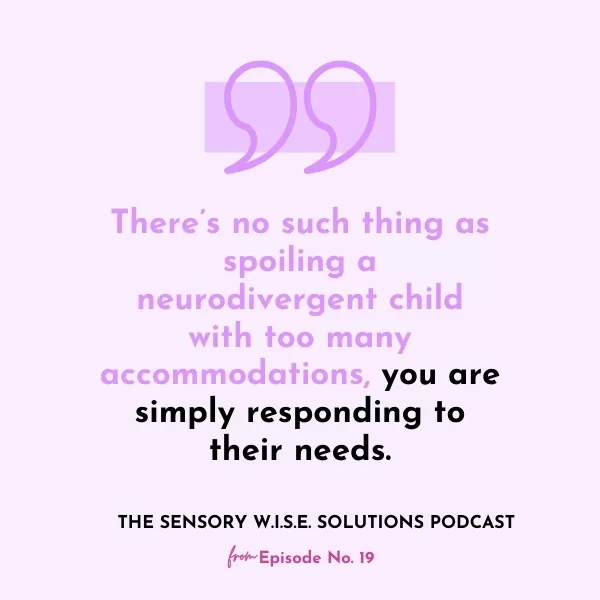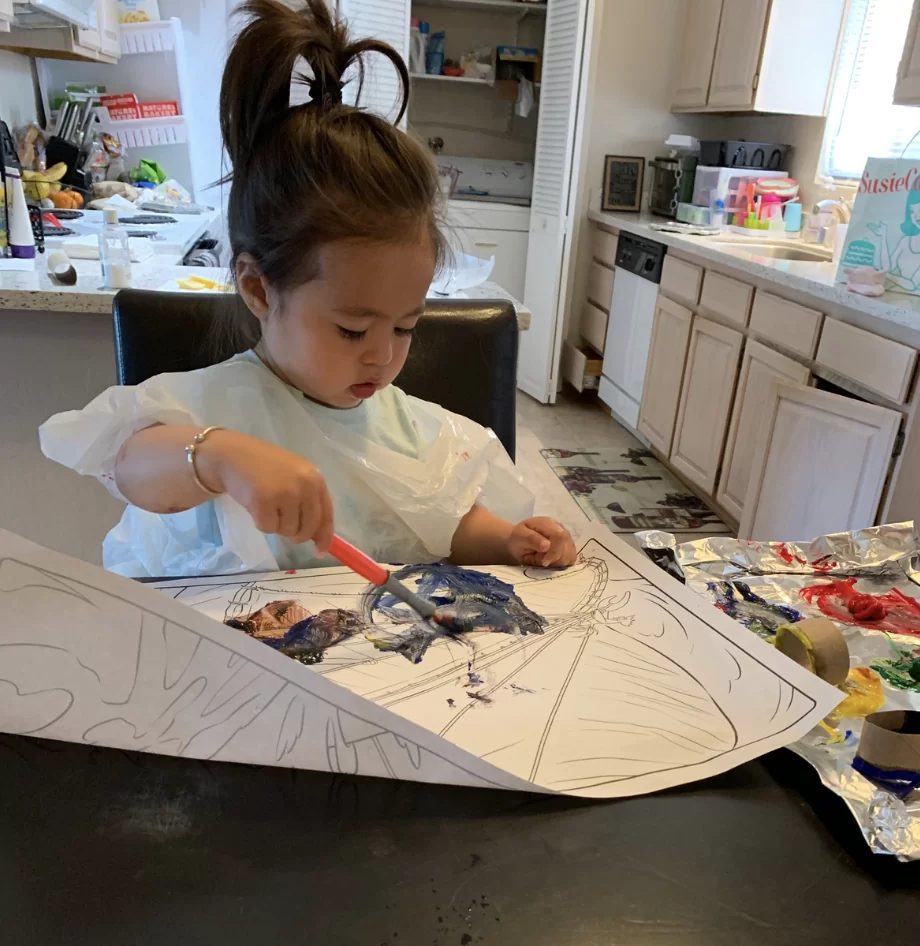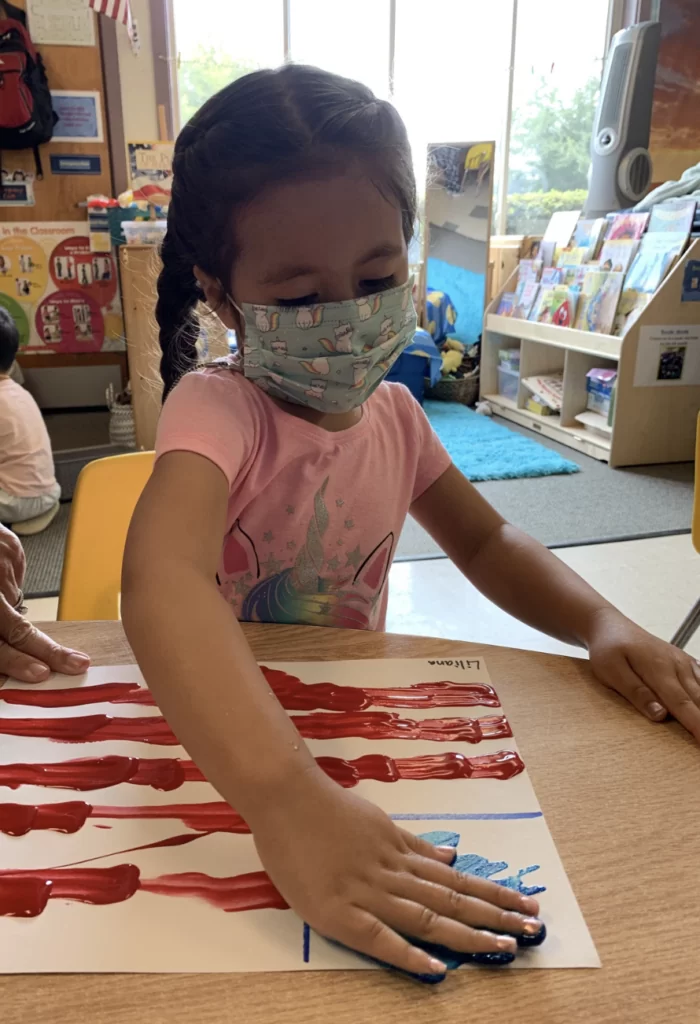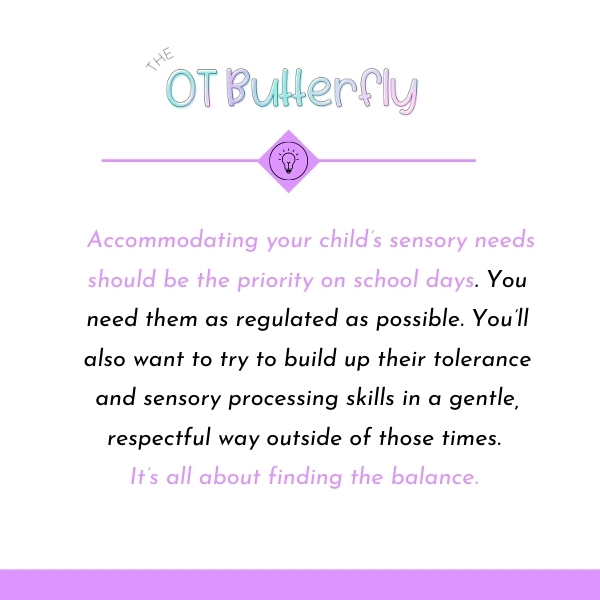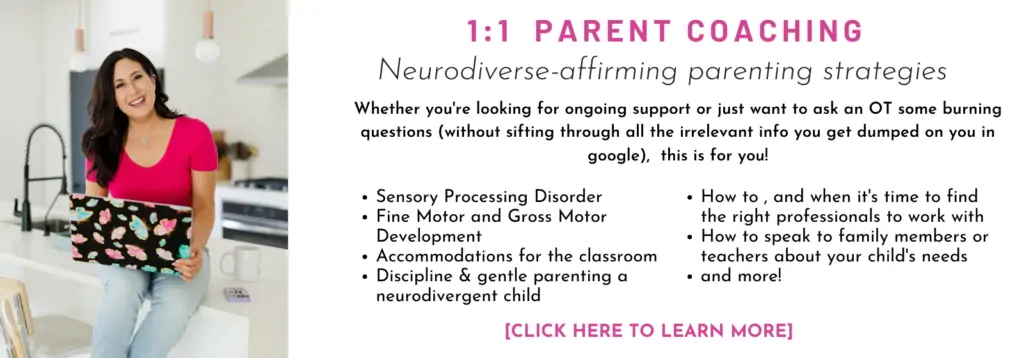Get your FREE sensory profiles cheat sheet >>click here<<
Accommodation vs. Exposure for Sensory Kids
Today I want to talk about the idea of avoidance vs. exposure for our kids who have sensory sensitivities.
For the purpose of this podcast, I’d like to clarify what I mean by exposure.
I know sometimes hearing the word “exposure” can sound very clinical or in the same context as OCD or it might even make you feel icky like you are forcefully exposing your child to something they fear.
That’s not quite what I mean. What I mean by exposure is offering your child opportunities to safely and comfortably be within the presence of their sensory trigger. Not pushing it to any specific level of exposure, but simply, not always shielding them from it.
But every once in a while, I get the question from parents that ask “How do I know if I’m giving in to my child too much? Am I accommodating them too much that they’ll never get used to _______? Am I spoiling them?”
Remember, you can’t spoil a kid with too many accommodations. That just doesn’t exist.
Examples of Accommodation vs. Exposure
So my go-to example usually has to do with messy play, because this can be one of the early signs of sensory sensitivities, and it’s the first sign I noticed with Liliana.
So lets say your 3 year old starts to cry and whine every time you try to do a finger painting activity with them.
You see those cute handprint Pinterest crafts and think, “OMG this looks so cute! Let’s try it!” But whenever you pull out the paint and try to get your little one’s fingers and hands in there, they immediately cry. If this continues to happen around paint, or other arts and crafts activities, a parent might respond in one of 2 ways:
- Parent completely stops offering finger painting activities and thinks, “well, they don’t like art” so you don’t do crafts with them.
- OR some parents go completely in the opposite direction and think “well they need to get used to it, it’s only for a few seconds they’ll get over it” and you push their hands into the paint, start painting their fingers even though they’re crying.
PS- if you’ve done the second thing… please don’t feel guilty. I’ve done it too! Like that time I made her dip her hand in a bowl full of water beads (see proof below)
Another example is maybe your child doesn’t like the seams in their socks (this is a very relevant trigger for our house). Should you completely accommodate your child by allowing them to wear shoes without socks, or do you sit through meltdown after meltdown, not leaving the house until they have socks on?
Well, like most things… you need to find the balance.
There are times when it’s appropriate to completely accommodate and “give in”, but there are times where it’s important to slowly stretch your child’s boundaries. Not completely force them out of their comfort zone, but gently nudge them in that direction.
Balance is necessary because if you completely avoid the activity, then your child won’t have a good chance at developing the processes required to tolerate it better. On the other hand, completely flooding your child with sensory input out of their control can set off major fight or flight triggers in their brain, which can invite more anxiety and fear of the activity. It can definitely back-fire.
The Just right challenge
So the balance is called the just right challenge. This is when you meet them where they’re at and slowly, gradually expose them to the stimulus. So you don’t avoid the activity, but you don’t throw them in the deep end- you let them dip their toes in.
Here’s how that would look like.
Let’s go back to the paint example. Your child doesn’t like touching paint. They can sit with you at the table and tolerate the sight of paint and being around it, they just don’t like interacting with it themselves.
So this would be considered their “baseline” level. I would continue to do painting activities with them… a few times a week, or just once a week, whatever works for you.
But just have them watch you do it.
There’s no pressure to have them touch it or try it, you don’t even set up their spot with the paint if you know it’s a trigger for them. You just sit down at the table with a craft and start painting it yourself.
Talk about it as you do the activity “I’m painting the car red”. You could try to offer them to interact with you while you paint like say something like “can you hold the cup of paint for me while I paint the car?”
At any point that they seem uncomfortable or like they don’t like it, then move the paint and the craft a little farther away from them.
See if you can get them to feel comfortable and calm at least sitting in the same space as you watching you paint the craft (that’s if their baseline level is here- this would change depending on where their skills are currently at).
Maybe by the 3rd time or 4th you do this activity, you can hand them a paint brush and say “you can paint the car”. The important part is, that you don’t give up and stop offering because you think they’re uninterested or because you think it’s going to cause a meltdown. You can find the point of entry (their baseline level) that they’re most comfortable with, and start from there. /
For some kids, their baseline level is not even being able to see the paint in the same room. That’s okay, then you can watch videos of kids on youtube painting art.
Overtime, the hope is that they start interacting with the paint, maybe with a large paint brush- their fingers and hands are still far away from touching the paint because the paintbrush is long; but as they get comfortable with the long paintbrush, then maybe one craft you have them paint with a q-tip (notice the size of the painting instrument gets shorter); then one craft after that you can try offering to paint with a cotton ball, and eventually move into touching with finger.
The main point of this all is that you want to slowly lead your child to the goal: finger painting by showing and exposing them to paint in a way that feels safe and less scary for them. This process could take weeks, it could take months, but the key is to continue offering it, AND offering it at the level that they are at, without forcing them.
You can do this for really any sensory sensitivity your child has- introducing new foods, new clothes, wearing socks, tolerating loud sounds, etc.
School days are for accommodations
There is one caveat to this and one important part to consider. Accommodating your child’s sensory needs should be the priority on school days, or any other important day that requires a lot of focus, attention, calm, regulation.
This means that on school days, it’s okay to let them wear their preferred leggings or skip socks for the school day. This means making sure their breakfast and snacks and lunch on school days are safe and preferred.
Why? Because the school day already offers sooo much sensory stimuli out of your child’s control, you need to send them there with room in their sensory cup so it doesn’t spill over (aka meltdown).You need to make sure they’re full and not hangry when they’re going to deal with loud sounds and unexpected touches at school from bumping into kids.
On school days for us, they’re already such an anxiety trigger that Liliana’s sensory needs and sensitivities are EXTREME in the morning. /
I do a lot of accommodating for her on school mornings.
It’s like a different child than on the weekends. On Saturdays and Sundays, she could get out of bed, change out of her pajamas and into her clothes independently. /
On school days, I literally need to pull her jammies off, help her put pants on one leg at a time, even feed her sometimes because she’s just so dysregulated and really needs the help. It took a while for me to be okay with this and accept this but eventually I realized it’s just my way of helping her save room in her sensory cup for school.
Then, after school, or on non-school days, you’d practice using the just right challenge, where you intentionally work with them on feeling comfortable around a certain sensory input (e.g. socks, paint, new food, etc) and hope that eventually their tolerance level is increased.
So in summary, you want to accommodate as best you can- safe clothes, safe foods, allow sensory breaks, allow noise canceling headphones, etc when they’re going to school. You need them as regulated as possible.
You’ll also want to try to build up their tolerance and sensory processing skills in a gentle, respectful way outside of those times. It’s all about finding the balance.
Remember, next time someone says you’re spoiling your child, or you keep “giving them what they want” by letting them “get away” with eating pizza all the time or wearing the same pants over and over, first of all tell them to mind their own business, and second of all, there’s no such thing as spoiling a child with too many accommodations.
You’re simply being responsive to their needs. But you do want to make sure you also help them grow skills at other times.
Links:
Instagram: @TheOTButterfly www.instagram.com/theotbutterfly
Website/blog: www.theotbutterfly.com
Email: LauraPetix@TheOTButterfly.com
Work with me: www.theotbutterfly.com/parentconsult
Waitlist for Sensory W.I.S.E. Solutions Program: www.theotbutterfly.com/waitlist
Buy me a coffee & ask me a question for a future episode: www.theotbutterfly.com/coffee


